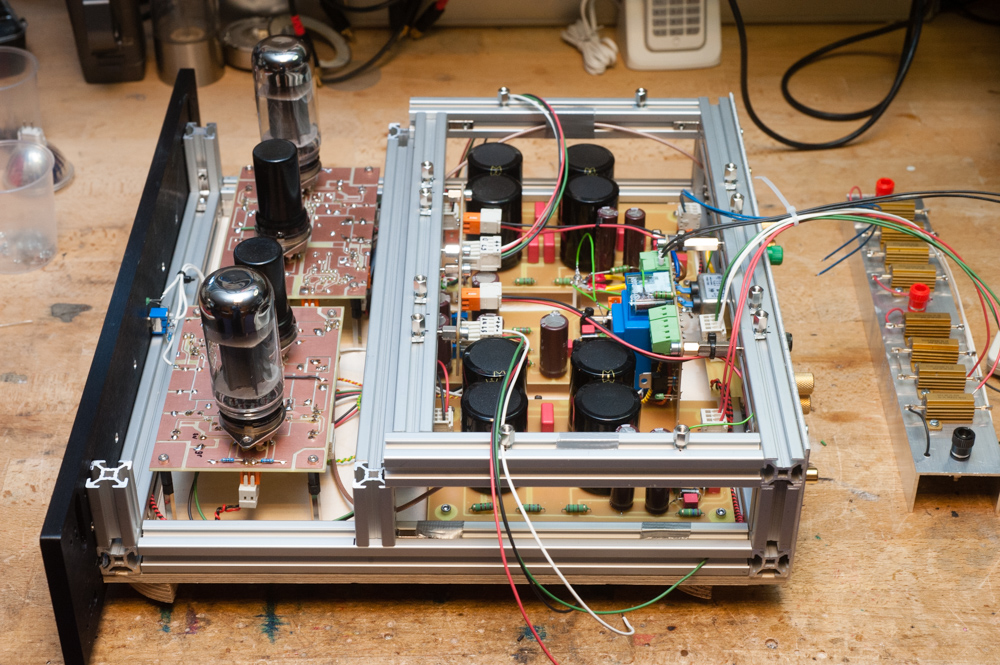
After the success of the beautiful preliminary stage , the MTA fever had finally seized me. What if I put the high-efficiency Altec 804 with an amp according to the MTA principle?

In one of the basic articles by Frank Blöhbaum emerges a “secret tip” that suited me exactly in the concept:
– still with ” bearable anode voltages ”
– as an amateur still possible to build
– Tube types are (still) reasonably available
– Use of “standard” network transformer and output transformer (
To anticipate it:
There are no schematics, no excerpts published!
Even board layouts were made exclusively for my own use on my own milling machine, so please no inquiries.
All rights, also in excerpts, are with Frank Bloehbaum !!
The basic articles are to be downloaded for a small amount of money!
With the circuit topology, I was by the replica of the pre-amp reasonably familiar, so it went fresh to work.
Only at Reinhöfer the right power transformer (Rondo Mueller germany) and the output transformers were ordered, as that took about 3-4 weeks of production time.
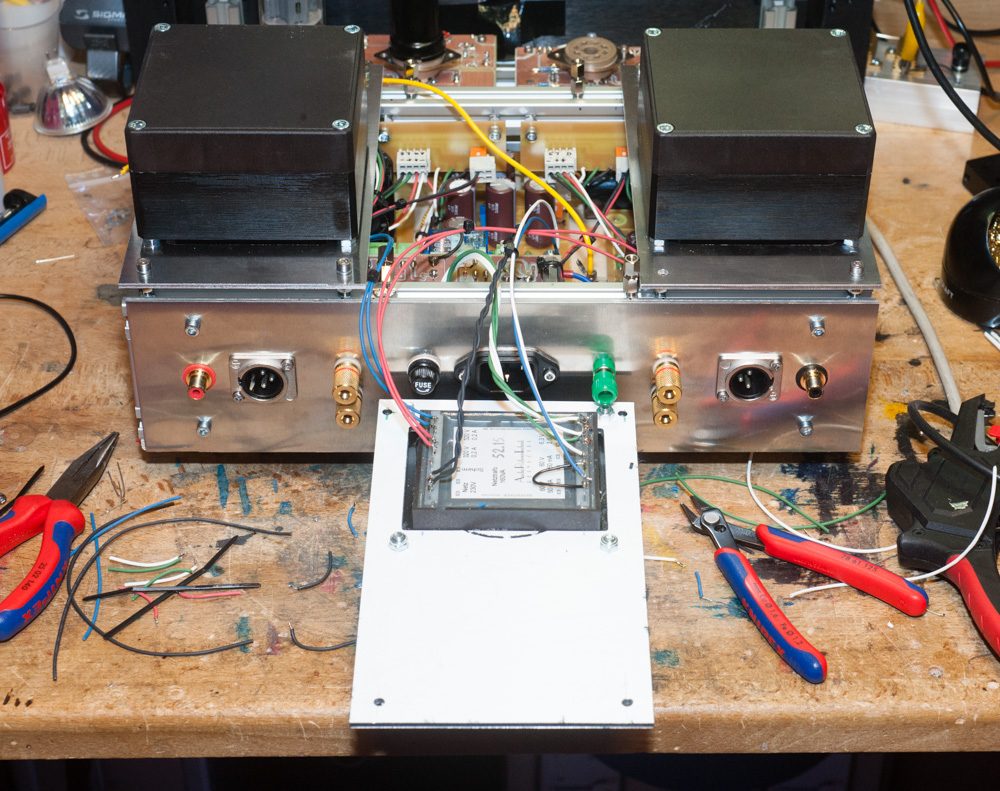
… .the transformer overhead, left and right thie output transformers
Coming from the actual power amplifier modules was drawn, transferred the circuit diagrams and designed the layout.
Since I wanted the tubes “overboard” , and everything should be compact, it went planning and constructional to the preserves.
The result were the following units:
– Power up module with relay control and providing 2 x 6V DC digital voltage
– 2 power supplies with RC filtering and output of + 380V DC with high filtering factor and 2000uF total capacity
– 2 power supplies for -150V negative voltage
– 2 power amplifier modules with 2 octal versions overboard
– So a consistent double mono principle (except for the power transformer)
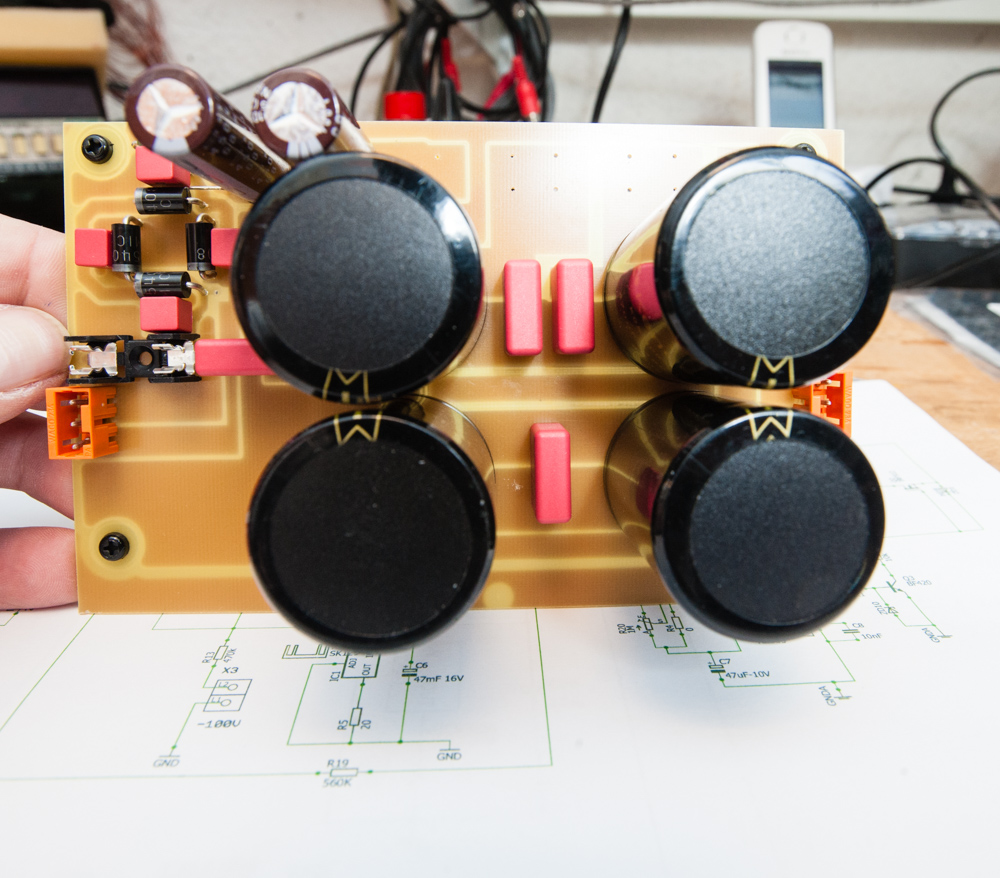

… ..the output stage module ….
The entire amplifier stands on an area of 35 x 35 cm.
The AÜT’s (output transformers) are fitted on mounting plates according to the instructions of Reinhöfer © . These mounting plates are in turn mounted on the easy profile © .
This ensures adequate heat dissipation and the can simply be “set aside” after loosening 4 screws each. This is very helpful for revision !!
Supplement 18.2.2018:
by moving the network transformer into the “outermost corner” and the AÜT’s to the other side, the freedom from hum of this MTA type could only be achieved.
Here are some details that I would like to share with you as they greatly facilitate construction and later revisions.
Since the tubes sit very tight in the versions, I was suspicious of the tube change of the soldered from the top of the board versions.
Too fast dissolves a solder joint and then you have the mess.
Since the Belton© sockets have an M3 thread, the topic was soon solved:
a continuous aluminum plate was milled to the height and the cut of the sockets and connected with M3 screws firmly with the 4 sockets, which in turn stand on high spacers (nylon (!!)) on the baseboard.
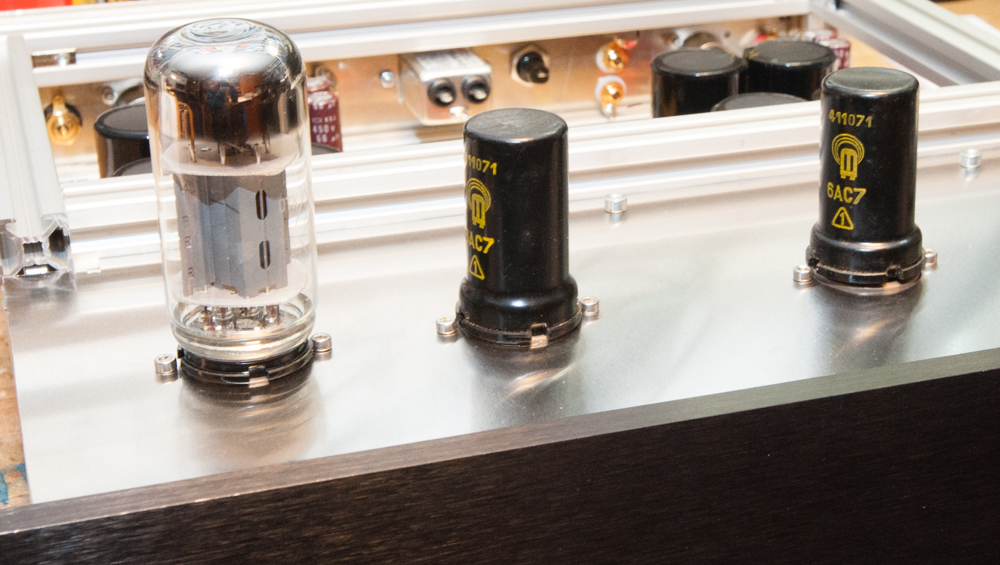
Due to the screw connection, the entire mechanical energy is transferred to the cover plate and not to the soldering points or circuit board during tube replacement / exchange …… ..
All connections were made as plug-in connections so that they can be quickly revised and / or exchanged.
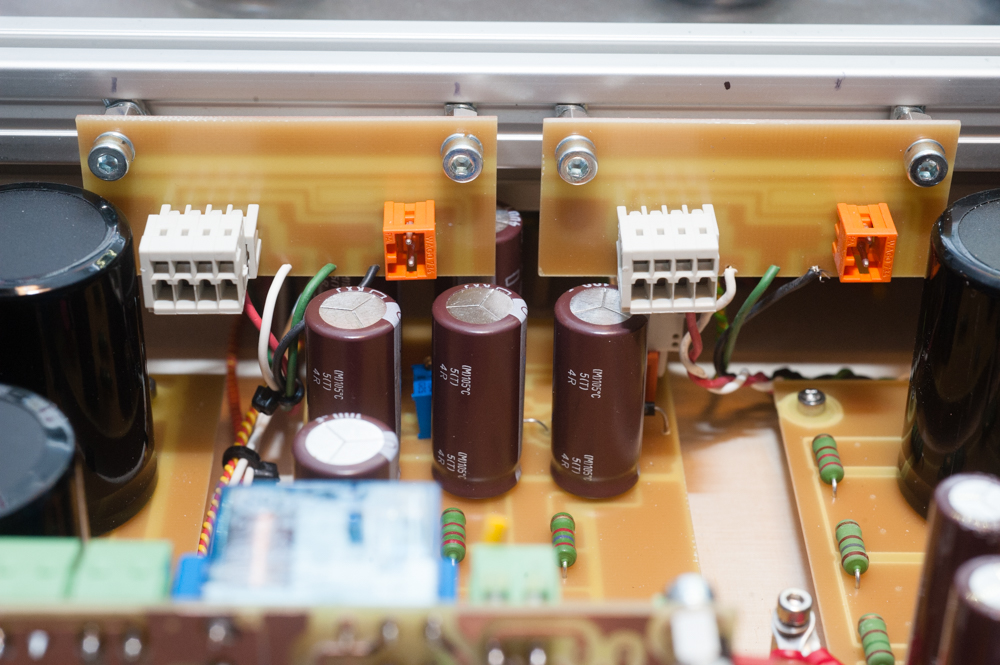
………… 2 small recording boards: the 4 poles for the AÜT, the 2 poles for the speaker connections, suspended from the easy system ©
The framework was made with the, easy profile system , that I had already used in the V69a.
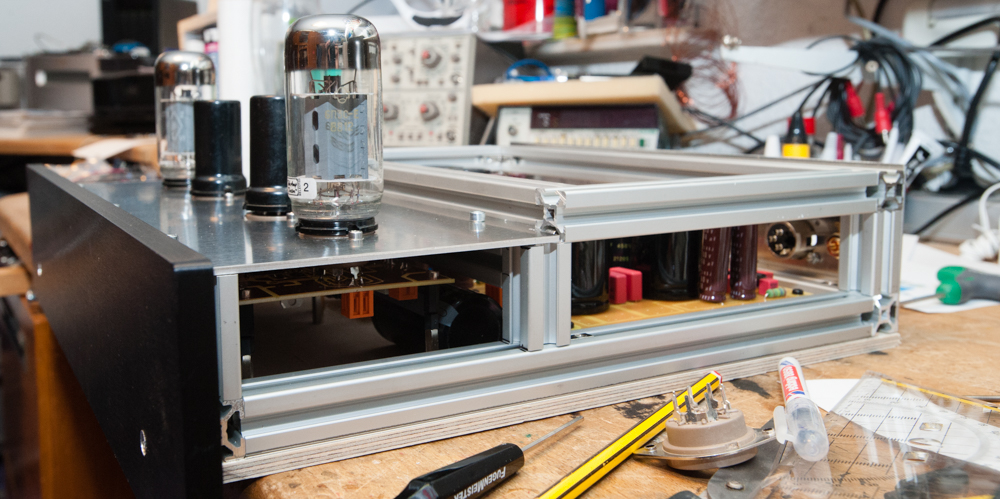
… the side view: the front of the actual amplifier module, the rear power supplies and the receptacle for AÜT and power transformer …
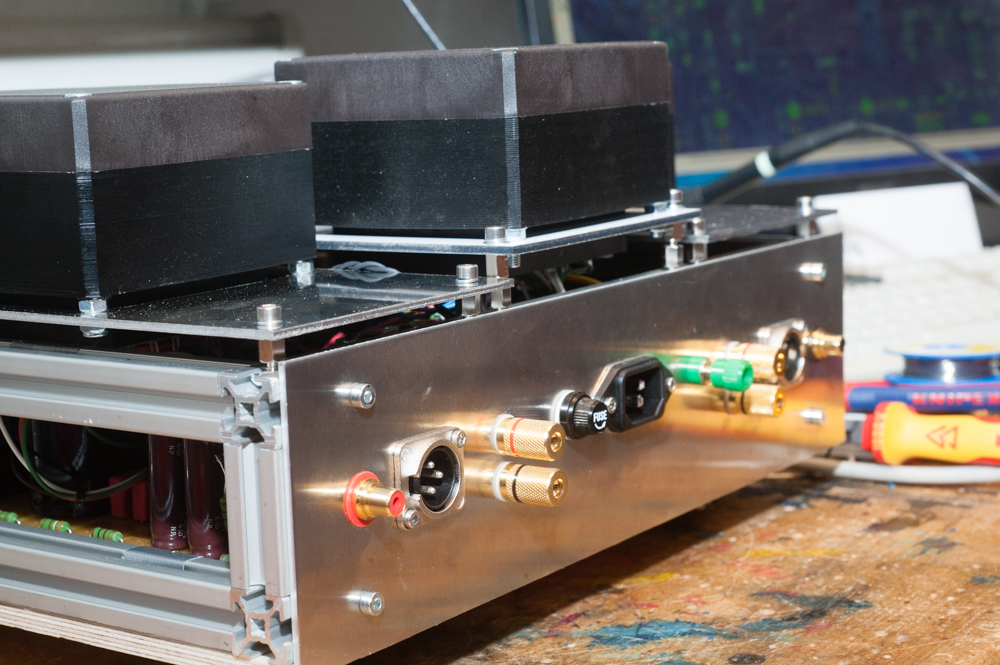
… ..the rear view with the “piggyback plates”, resting in the AÜT and power transformer. The side panels of the housing are still in the planning … ..
Result of the MTA amplifier:
– a phenomenally controlled, rich bass
– especially in classic instruments, cellos, double basses and violas (!!) are displayed cleanly
– a clear, differentiated but very musical sound
– powerful without being nervous
A great concept is driven to the extreme!!
And I thought so far that the power amplifier is the least important part of the chain, I was clearly taught a better way.
If you look at the harmonic distortion curves, the frequency response with an audio analyzer, you can guess where the great sound comes from ……
I do not want to get involved in a fundamental discussion here, as the sound result counts for me.
And since this amplifier has put everything in the shade, which I’ve heard so far on its own system.
Thank you very much:
My thanks and compliment go to Frank Bloehbaum, the developer and inventor of the MTA concept, and to Björn J. , who provided me with some – crucial – tips.
The execution of the AÜT and the power transformer is exemplary including an excellent label !!
And last but not least: Michael Münch for the wonderful execution of the power supply calculation on one of the countless pages of the Audionisten worth reading.
For all interested buyers of ready-made products:
It can finished devices in the versions 15Watt, 30Watt and 50Watt power (each at 4 and 8 ohms) first hand from the developer and inventor to be purchased (contact by mail)!
Dortmund, 10.2.2018
